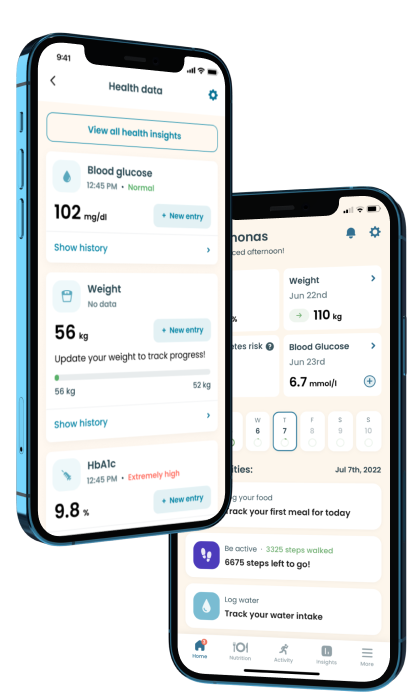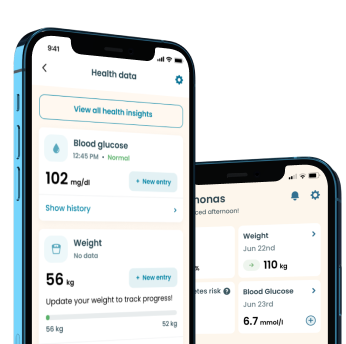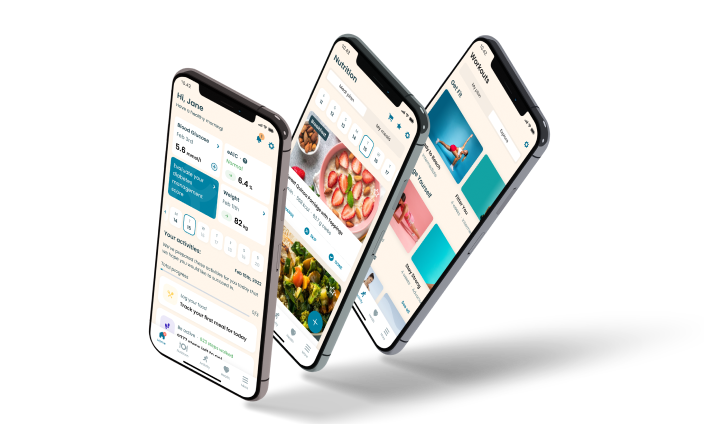Tapioca and Diabetes

It's ok
67
358 kcal
Tapioca is a starchy derivative obtained from cassava tubers and is used as a staple food in various parts of the world. It is majorly composed of pure carbs with tiny amounts of fiber and protein. Due to its gluten-free nature, it is employed as a substitute for wheat and other grains in gluten-intolerant individuals.
For diabetics, tapioca might be considered unsafe for their health because of its high carb content and glycemic index (GI). However, what does science have to say about this starchy product? This article outlines the various controversies surrounding tapioca’s harmful effects and its possible benefits, drawing from existing research and clinical trials on tapioca and diabetes.
Nutritional value
- Protein 0.2 g
- Carbohydrate 89 g
- Fat 0 g
- Fiber 0.9 g
- Sugar 3.4 g
- Cholesterol 0 g
Nutritional Profile of Diabetes
Packed with significantly high carb and calorie levels, tapioca is available for flour, meal, flakes, or pearls. One cup of dry tapioca pearls contains a whopping 135 g of carbs alongside 544 calories. This gets even scarier when you consider that it has just 1.37 g of fiber in a cup.
While it might seem like all hope is lost for the inclusion of tapioca in a diabetic diet, this high starch meal shines with its highly negligible fat content. In addition, it has meager amounts of proteins, vitamins, and minerals. Yet, its low levels of protein and other beneficial nutrients make it inferior to other grains and flour, nutrient-wise.
Take a quiz
Discover what Klinio app can do for you
Healthy diabetes meal plan crafted just for YOU

Personalized workouts with no equipment needed

Track your progress with smart tracking tools

Should Diabetics Eat Tapioca?
Tapioca boasts many heart-friendly constituents and decent amounts of calcium, essential for strong bones. However, in addition to these, it has other features that make it a desirable food for diabetes.
Weight Management
Research links weight loss with improved glycemic control. Thankfully, the resistant starch in tapioca—although in lower amounts than cassava root—proves to be beneficial in weight management.
Various studies conducted on rodents indicate that replacing rapidly digestible starch with resistant starch reduces body weight. This weight management effect of resistant starch in tapioca is linked to the low-calorie content present in resistant starch.
Resistant starch also manages weight by facilitating satiety, which reduces food intake and a subsequent weight reduction. However, while satiety is majorly stimulated by dietary fiber, resistant starch is still being researched for potential properties.
Other means by which resistant start influences body weight include the promotion of fat oxidation/energy expenditure.
Reduces Glycemic and Insulin Levels
Maltodextrin, a compound derived from starchy foods like tapioca, offers desirable blood glucose- and insulin-lowering properties. Namely, a five-day study done on 16 healthy participants found tapioca-resistant maltodextrin (TRM) to reduce postprandial serum insulin and plasma glucose levels with no significant effect on satiety. However, high dose TRM of up to 50 g caused flatulence.
Why Should Diabetics Avoid Tapioca?
Even though tapioca possesses many outstanding health benefits, it poses a risk to diabetic health for several reasons, including the following:
High Carb Content
Since tapioca is composed almost entirely of starchy carbs, it is deemed unhealthy for people trying to limit their consumption of carbs or those trying to manage their blood sugar levels.
High Glycemic Index (GI)
The glycemic index (GI) and glycemic load (GL) measure how much your blood glucose levels change after you eat. Again, tapioca falls short on both fronts. With a high GI of 70 and a medium GL of 12.6, tapioca isn’t entirely safe for those seeking regulated blood sugar levels.
High-Calorie Content
Even though the resistant starch in tapioca positively manages weight, tapioca is still a high-calorie food. Since research associates weight loss with low-calorie intake, tapioca might not be your best option if you’re looking to prevent excessive weight gain.
Safe Ways to Add Tapioca to Your Diet
Overall, the high carb content of tapioca coupled with the meager amounts of nutrients it offers disqualifies it from being considered an ideal food choice for diabetics. Yet, this doesn’t mean you can’t eat it if you have diabetes.
As long as you consult your doctor or dietitian and consume it in very minimal portions, you shouldn’t have much to worry about. Here are a few options you can try out when eating tapioca:
- Include tapioca flour in gluten and grain-free bread recipes
- Use tapioca to make flatbread
- Include tapioca pearls in your desserts, snacks, bubble tea, or puddings
- Use tapioca to thicken gravies, sauces, and soups
- Add tapioca to nuggets, doughy and burgers to improve texture and moisture content
Conclusion
Research on tapioca and diabetes proves it to be a high-carb and high-calorie food, making it relatively unsafe for diabetics. However, you can consult your doctor on how to safely include it in your diet plan as it also offers some nutritional benefits.

Download Klinio app!
Get more by downloading our free Klinio App. Analyze your health, form new habits and manage your diabetes anytime, anywhere.
OR
SCAN QR CODE



GET THE APP











